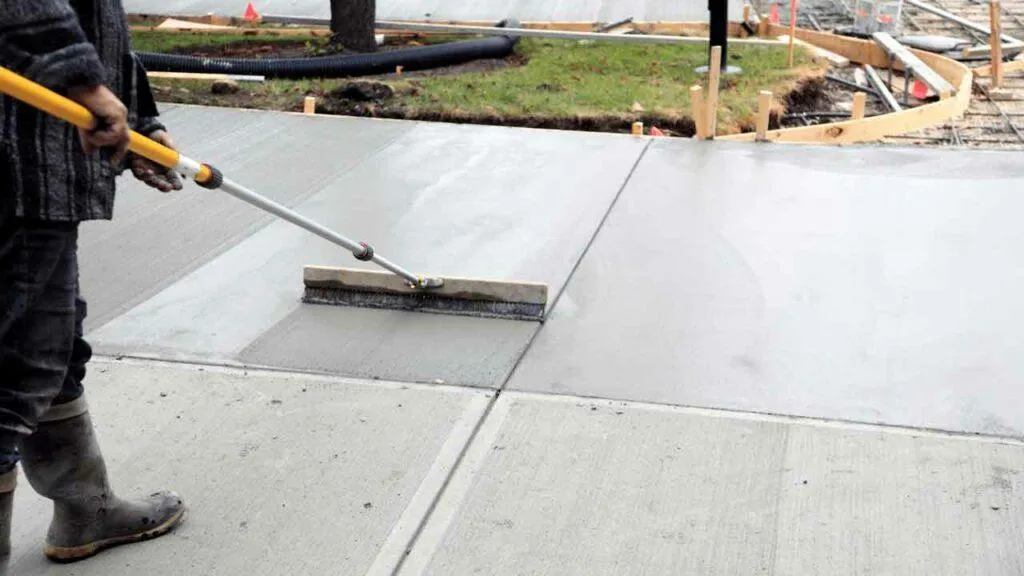
Cracks, Sinking, and Discoloration: The Most Common Concrete Problems Near Montgomery and How to Fix Them
Why Your Concrete Is Giving You Trouble
You paid good money for that concrete driveway, patio, or foundation. It was supposed to be tough, built to last. But now? Cracks are spreading like spiderwebs, your driveway has a dip in it, and what was once a crisp, clean surface looks stained and patchy. You’re frustrated, maybe even a little worried.
You’re not alone. Concrete issues are common in Montgomery and surrounding counties. Homeowners throughout Autauga, Elmore, and Dallas Counties deal with shifting, cracking, and discoloration every year. Our region’s climate, soil, and heavy rainfall all play a role, but that doesn’t mean you have to live with bad concrete forever.
At PennyEarned Concrete and Site Prep, we see these problems all the time. And we know how to fix them. Whether you’re dealing with a small crack or a sinking driveway, we’ll explain what’s happening, why it’s happening, and—most importantly—how to fix it.
Cracking: Why Your Concrete Is Splitting Apart
Cracks are the most common concrete issue, and they come in different shapes and sizes. Some are just cosmetic, while others are warning signs of bigger problems.
Types of Concrete Cracks
Hairline Cracks – Thin, surface-level cracks that don’t affect the concrete’s strength. More of an eyesore than a real problem.
Shrinkage Cracks – Happen when the concrete dries too fast, common in Montgomery’s hot summers.
Settlement Cracks – Appear when the ground beneath the concrete shifts, often due to improper soil compaction.
Structural Cracks – Wide, deep cracks that run through the entire slab. These are serious and can indicate foundation issues.
What Causes Cracking?
Soil movement – Alabama’s clay-heavy soil expands when wet and shrinks when dry, causing shifting.
Extreme temperatures – Hot days and cool nights cause the concrete to expand and contract, leading to cracks.
Poor installation – If the concrete wasn’t mixed or poured correctly, it’s more prone to cracking.
When Should You Worry?
Small hairline cracks? Not a big deal. But if cracks are wide (bigger than 1/8 inch) or seem to be getting worse, it’s time to take action.
Sinking and Uneven Concrete: The Hidden Danger
That dip in your driveway? That uneven walkway? It’s not just annoying—it’s a trip hazard. Sinking concrete happens when the ground beneath it moves or erodes, creating empty spaces that cause slabs to sink.
Why Does Concrete Sink in Montgomery?
Erosion – Heavy rain washes away soil underneath concrete, especially near gutters and downspouts.
Poor soil compaction – If the soil wasn’t compacted properly before pouring, it can settle over time.
Tree roots – Large roots grow beneath driveways and push up on the slab, causing uneven surfaces.
Why It’s a Problem
Aside from looking bad, sinking concrete can create safety risks. A sunken sidewalk or driveway edge can cause people to trip, and water pooling in low areas can lead to further damage.
Discoloration: Why Your Concrete Looks Stained, Faded, or Patchy
You remember how perfect your new concrete looked? Now, it’s faded, spotted, or discolored. Concrete discoloration is a common complaint, and it can happen for several reasons:
Common Causes of Concrete Discoloration
Water damage – Too much water in the mix or excessive rain exposure.
Sun exposure – UV rays break down surface pigments, causing fading.
Improper finishing – Uneven application of sealers or curing compounds.
Chemical exposure – Spills from oil, grease, or de-icing salts can stain concrete.
When to Worry About Discoloration
If it’s just a matter of appearance, staining or resurfacing can often fix it. But if the discoloration comes with crumbling, flaking, or cracking, there could be a deeper issue.
How to Fix Cracked, Sinking, or Discolored Concrete
You don’t have to tear everything out and start over. Here’s how these common problems can be fixed:
Fixing Cracks
Small hairline cracks – Can often be sealed with a concrete patching compound.
Larger cracks – Require epoxy injection or resurfacing to prevent further damage.
Structural cracks – May need professional intervention, especially if they’re foundation-related.
Fixing Sinking Concrete
Mudjacking (Slabjacking) – A process where a special mixture is pumped underneath the slab to lift it back into place.
Foam Injection Leveling – A newer method that uses expanding polyurethane foam to raise concrete.
Complete replacement – In cases of severe damage, replacing the slab may be the best option.
Fixing Discoloration
Power washing – Can remove surface stains and dirt.
Concrete staining – A good option for improving appearance with a fresh look.
Resurfacing – Covers the entire surface with a new layer, making old concrete look brand new.
Can These Problems Be Prevented?
Yes! While no concrete is 100% problem-proof, proper installation and maintenance can go a long way.
Prevention Tips
Use quality concrete – A properly mixed and reinforced slab will last longer.
Compact the soil – Ensuring a solid foundation prevents sinking.
Control water flow – Keep gutters and drainage systems directing water away from concrete.
Seal the surface – Sealing prevents water damage, stains, and fading.
Fix small cracks early – Small cracks can turn into big ones if ignored.
When to Call a Professional Concrete Contractor in Montgomery
Some small fixes can be DIY, but major cracks, sinking slabs, and deep discoloration often require professional help.
Signs You Need a Pro
Cracks are growing wider or deeper.
Your driveway, patio, or walkway has sunken spots.
Discoloration is severe and patchy.
The problem is spreading quickly.
At PennyEarned Concrete and Site Prep, we’ve helped homeowners across Montgomery, Autauga, Elmore, and surrounding counties fix their concrete issues the right way. We aren’t a massive firm, but we take pride in customizing solutions for each client—because every project is different.
If you’re dealing with cracking, sinking, or discolored concrete, don’t wait until it gets worse. Give us a call, and we’ll help you find the best fix for your home.
All rights reserved | Privacy policy | Client Support Area | Terms & Conditions | Privacy policy




